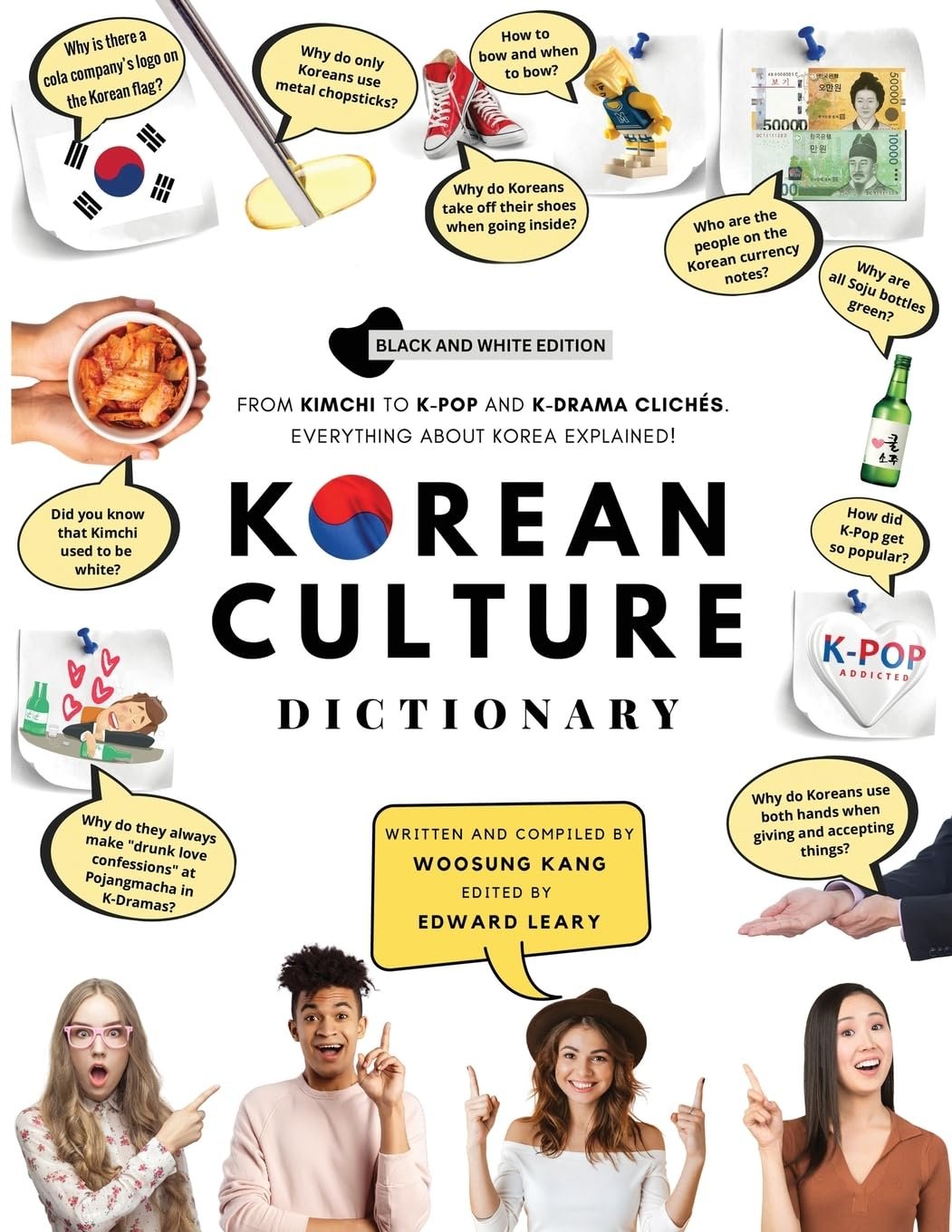Discovering Korea Through the Pages of a Dictionary
As someone who has always been captivated by the vibrant tapestry of cultures around the world, "Korean Culture Dictionary: From Kimchi To K-Pop And K-Drama Clichés" by the ever-curious team at New Ampersand Publishing instantly caught my attention. Coming from a background of binge-watching K-Dramas and obsessively following my favorite K-Pop idols, I found myself curious—what lies beneath the surface of this fascinating culture that has taken the world by storm? This book promised to be the bridge that connected my surface-level understanding to a deeper appreciation.
At its core, this dictionary is a comprehensive guide that navigates through over 350 essential topics. The chapters are organized by categories that lay out the “Five Ws (Who, What, When, Where, Why) and How.” What stood out to me was how well this format caters to both novice learners and experienced fans alike. Each section is friendly and approachable, making it feel as though a friend is guiding you through a labyrinth of cultural nuances and quirks.
I was particularly drawn to the conversational writing style, which balances informative content with anecdotes and humor. For example, it explains why Koreans seem to age differently upon arriving in the country, and delves into the cultural significance behind drinking etiquette, like why it’s frowned upon to pour drinks with one hand. These details not only answered questions I didn’t know I had but added another layer to my enjoyment of K-Dramas and K-Pop songs, where these cultural nuances often slip through the cracks.
One of my favorite features is the inclusion of scannable QR codes that lead to YouTube clips, providing real-life examples of the culture in action. It’s a clever and engaging way to visualize concepts—like the bustling street markets or the sizzling of the infamous soju! Testimonial snippets from readers echo my sentiments; one reviewer noted feeling an increased connection to K-Dramas post-reading, resonating deeply with my own experience.
However, I won’t gloss over the fact that some readers have voiced disappointments regarding the black-and-white format. As someone who treasures vibrant visuals, I, too, felt a slight pang at the missing color illustrations. That said, the depth of knowledge and insight packed into these pages more than compensates for it.
In conclusion, I wholeheartedly recommend "Korean Culture Dictionary" to anyone intrigued by Korea—whether you’re a K-Pop newbie, a seasoned K-Drama aficionado, or even an expat eager to assimilate. It’s an enriching read that truly enhances your understanding and appreciation of Korean culture. Personally, I found it to be not just a book, but a delightful exploration that has sparked my curiosity even further. Whether you’re preparing for a trip, trying to connect with Korean friends, or simply wanting to dive deeper into a captivating culture, this dictionary is a wonderful tool that opens the door wide. So grab a cup of soju—cheers to a new adventure in understanding Korea!







